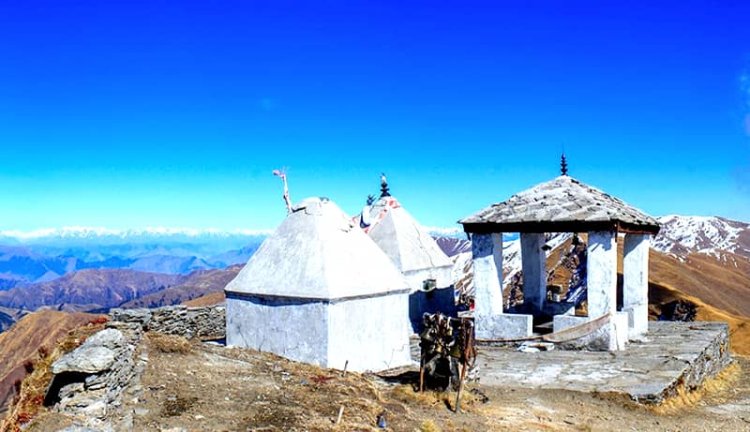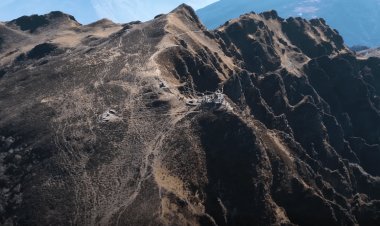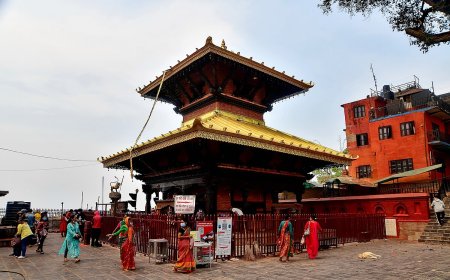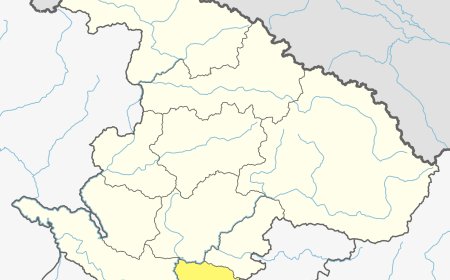Badimalika Temple: A Sacred Haven in the Himalayas
Discover Badimalika Temple: A Himalayan sanctuary of ancient myths and vibrant festivals. Immerse in spiritual tales and Bhagwati worship in Nepal's cultural gem.

Nestled amidst the majestic Himalayan peaks in the Bajura district of Nepal, Badimalika Temple stands as a symbol of spiritual significance and cultural richness. This ancient temple, dedicated to the goddess Bhagwati, attracts pilgrims from far and wide, drawn not only by its breathtaking location but also by the myths and legends that surround its existence.
Historical and Geographical Context:
Badimalika Temple is perched atop a hillock at an elevation of 4,200 meters, making it a spiritual haven amidst the clouds. Situated in the Bajura district of the Seti Zone, this temple has become one of the major pilgrimage sites in Nepal. The journey to Badimalika is not only a physical ascent but also a spiritual one, with each step echoing the devotion and faith of the pilgrims.
Mythological Tapestry:
The mythology associated with Badimalika Temple is as diverse and captivating as the landscape that cradles it. One prominent tale links back to the time of Sati Devi and the grand Yagya conducted by her father, Daksha Prajapati. The exclusion of Lord Mahadev from the Yagya, coupled with Daksha's disdain for Mahadev's unconventional lifestyle, led to a tragic turn of events. Unable to bear the insult to her husband, Sati Devi immolated herself in the Yagya fire.
The grief-stricken Mahadev, upon learning of Sati's demise, unleashed his wrath through Birbhadra and Bhoot Gana, seeking revenge on Daksha Prajapati. This marked the beginning of Mahadev's poignant journey carrying Sati's lifeless body across the world. Vishnu's intervention with the Sudarshan chakra added another layer to this tale, transforming the places where Sati's body parts fell into sacred Shakti Peethas.
In the case of Badimalika, it is believed that Sati's left shoulder fell in Mallagiri mountain, which later became Malika. This mythological narrative weaves a tapestry of sorrow, vengeance, and the creation of sacred spaces, with Badimalika emerging as a significant node in this cosmic drama.
Another intriguing myth involves Bhagwati, after slaying the demon Mahisasur, finding respite in a place called "Dwaredhunge" of Kalikot. The narrative takes an unexpected turn when a low-caste individual, seeking sustenance, inadvertently triggers a chain of events by requesting the goddess to kill everyone in his house. The goddess, in her divine power, fulfills this wish. The closing of the temple doors and the goddess's journey through Triveni, Panchpur Patan, Mallapuri Patan, culminating in her settlement in Badimalika, adds layers of mystery to the temple's history.
The imprint of a blow on the temple door, a consequence of the angry person's actions, stands as a silent witness to this mythological drama. It is a tangible reminder of a moment in time when divine forces and human desires collided, shaping the destiny of Badimalika.
Pilgrimage Route and Cultural Significance:
The journey to Badimalika is not merely a physical trek; it is a spiritual odyssey for those who undertake it. Pilgrims follow a designated route through Triveni, Panchpur Patan, and Mallapuri Patan before reaching the sacred precincts of Badimalika. The trek, though challenging, is adorned with the natural beauty of the Himalayas, providing pilgrims with a sense of communion with both the divine and the earthly.
The cultural significance of Badimalika is amplified during the annual festival of Malika Chaturdashi, a vibrant celebration held in the month of Bhadra. Pilgrims from all corners of Nepal and even from India converge upon the temple during this time, driven by the belief that their prayers at Badimalika will usher in blessings and fulfill their deepest wishes. The air is filled with devotion, the sounds of hymns, and the vibrant colors of traditional attire, creating an atmosphere of spiritual jubilation.
Ganga Dashara and Janai Purnima, marked by official fairs, further underscore the cultural importance of Badimalika. These festivals not only serve as occasions for religious observance but also as opportunities for communities to come together, fostering a sense of unity and shared heritage.
Imprint of the Divine and Human Interaction:
The physical and metaphysical dimensions of Badimalika are palpable in the imprint of the blow on the temple door. This enduring mark serves as a testament to the intertwining of divine forces and human actions. The narrative of a mortal's plea, granted in divine wrath, and the subsequent departure of the goddess underscores the fragile boundary between the sacred and the mundane.
The imprint becomes a focal point for pilgrims, a tangible link to the mythology that enshrouds Badimalika. It is a reminder that the sacred spaces we venerate are not only repositories of divine energy but also witnesses to the complex dance of human desires, regrets, and the divine response.
Preserving the Legacy:
As Badimalika continues to draw pilgrims and enthusiasts alike, there is an inherent responsibility to preserve its cultural and natural legacy. The lack of signposts and infrastructural support on the trail necessitates a delicate balance between accessibility and conservation. Local guides play a crucial role in ensuring that the journey to Badimalika is not only spiritually enriching but also safe and sustainable.
Efforts to document and disseminate the rich tapestry of myths associated with Badimalika can contribute to a deeper appreciation of its cultural significance. As pilgrims tread the path to the temple, they become part of a living tradition, carrying forward the stories and rituals that have echoed through the Himalayan valleys for generations.
Conclusion:
Badimalika Temple stands as a testament to the enduring interplay of myth, spirituality, and cultural heritage. Its location, myths, and festivals converge to create a tapestry that captures the imagination and reverence of those who seek solace and blessings in its sacred precincts. As pilgrims traverse the challenging terrain to reach this Himalayan abode, they embark not only on a physical journey but also on a quest for spiritual awakening and connection with the divine forces that shape the narrative of Badimalika.
What's Your Reaction?





































































































